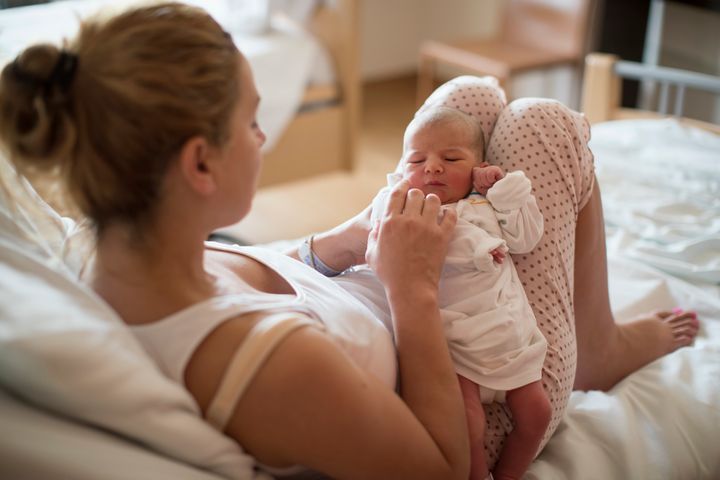Babies have a habit of waking their parents up in the middle of the night - and it starts on the day they’re born. The most common time to give birth is a rather unsociable 4am, a study has found. In fact, seven out of 10 births take place outside the working day.
An analysis of more than five million births in England found that overall 71.5% of births take place outside the hours of 9am and 4.59pm on a weekday. The study, led by City, University of London, found the time and day that women give birth can vary significantly depending on how labour starts and the mode of giving birth.
Just over half of mothers now have spontaneous births after labours which start spontaneously, with researchers finding these were most likely to happen between 1am and 6.59am, peaking at 4am with a trough in the afternoon. They were slightly more likely to happen on weekdays than other days.

The researchers found 28.5% of births occurred between 9am and 4.59pm on weekdays, while 71.5% took place outside these hours at weekends, on public holidays or between 5pm and 8.59am on non-holiday weekdays.
Elective or pre-planned caesarean births accounted for 9.2% of births and were seen to occur mostly on weekdays between 9am and 11.59am, with a pronounced peak between 9am and 10.59am.
Very few occurred between 5pm and 6.59am on weekday evenings and nights, and even fewer at any time at weekends and on holidays, reflecting staff working patterns.
Differences between days were most pronounced among pre-planned caesarean births, which rarely occur at weekends or on public holidays, with the highest numbers recorded on Mondays and on weekdays after a holiday period, followed by Thursdays and weekdays before a holiday, again reflecting staff rotas.
Meanwhile, births after induced labours, which made up more than a fifth of births, were more likely to occur around midnight on Tuesdays to Saturdays and on days before a public holiday period.
They were less likely to occur on Sundays, Mondays and during or just after a public holiday.
Induced labours may lead to spontaneous births, operative births using forceps or ventouse, or emergency caesareans. These three groups of induced births shared a weekly cycle that had its highest peak on Friday night and its trough on Monday morning.
As in earlier analyses by day of birth, numbers reached their minimum level on Christmas Day and Boxing Day.
Patterns of spontaneous birth have remained unchanged in England since the 1950s, but they found that overall patterns of birth have changed following the rise in rates of obstetric intervention from the latter half of the 20th century.
Researchers said this was the first national analysis to look at all aspects of time of birth in England, carried out in collaboration with University College London (UCL) and the National Childbirth Trust (NCT).
The team linked data from birth registration, birth notification, and Maternity Hospital Episode Statistics and analysed 5,093,615 singleton births in NHS maternity units in England over a 10-year period from 2005 to 2014.
Lead author Dr Peter Martin, of UCL, who conducted the research while at City, University of London, said: “Long-term experience and research from other areas has shown that human births without obstetric intervention are most likely to occur at night or in the early hours of the morning.
“This may be part of our evolutionary heritage. Our ancestors lived in groups that were active and dispersed during the day and came together to rest at night. So a night-time labour and birth probably afforded the mother and newborn baby some protection.
“This does not explain some of our other findings, however. It was not surprising to find that planned caesarean sections are not usually scheduled on holidays, but it is not straightforward to understand why numbers of spontaneous births, without any obstetric intervention, were lower on Christmas Day and Boxing Day than on other days of the year.
“Selective obstetric intervention in preceding days could be an explanation but more research would be needed to investigate this.”
The study is published in the journal PLOS One.